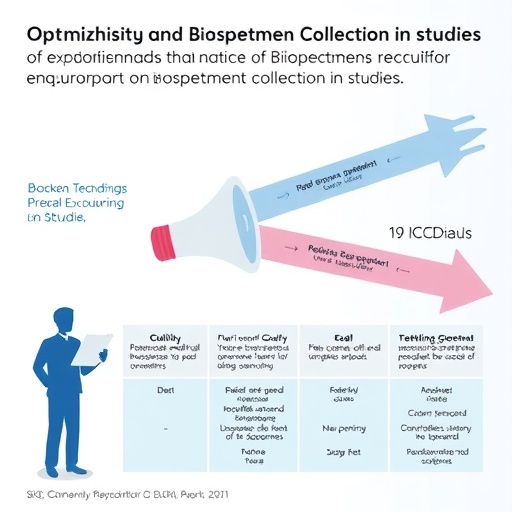In an increasingly complex healthcare environment, the resilience of nursing teams is becoming a pivotal aspect of effective patient care. Resilience, defined as the ability to adapt and recover from challenges and stressors, is crucial in high-pressure situations such as cardiopulmonary resuscitation (CPR). A recent study led by M. Rajaee and colleagues has explored this concept through the lens of the Persian version of the Nurse Team Resilience Scale (NTRS), marking an important step in understanding how cultural contexts influence nursing practices and mental health.
The study emphasizes the importance of resilience not only at the individual nurse level but also within the dynamics of nursing teams. In the chaotic environment of emergency medicine, where every second counts, the emotional and psychological strength of healthcare providers can significantly affect patient outcomes. By evaluating the nurse team resilience scale, the researchers aimed to shed light on how resilience can be measured and fostered within teams, thereby enhancing their functionality in critical situations.
The translation and psychometric evaluation of this scale represent a vital contribution to nursing research. For a long time, there has been a noticeable gap in the availability of culturally relevant psychological metrics for nursing professionals in different parts of the world. The Persian version of the NTRS fills this void, making it possible for Persian-speaking nurses to assess their resilience levels accurately. The study’s findings could help in designing targeted interventions to bolster team resilience, thereby enhancing the quality of care provided to patients undergoing CPR.
One of the central aspects of the research involves a meticulous validation process. The researchers ensured that the translation of the scale retained its original meaning while being culturally appropriate for Persian-speaking populations. This level of rigor is essential for any psychometric evaluation, as it increases the reliability and validity of the tool within the specific cultural context. The study provides comprehensive evidence supporting the effectiveness of the translated version, which can be a game-changer for nursing teams looking to assess and improve their resilience.
The implications of this research extend beyond mere metrics. As healthcare systems worldwide grapple with increasing demands and pressures, fostering resilience among nursing teams may yield considerable benefits. Resilient teams can manage stress better, communicate more effectively, and work collaboratively under pressure, ultimately leading to improved patient care. The study provides a framework for healthcare administrators and policymakers to consider resilience training programs as an integral part of staff development.
Moreover, the findings underscore the interconnectedness between team dynamics and individual resilience. By highlighting the collective nature of resilience, this research encourages a shift in focus from merely training individuals to fostering a supportive environment where teams can thrive together. Such a transformative approach can enhance job satisfaction, reduce burnout, and improve overall workplace morale among nurses, which is critical in a field known for its high turnover rates.
The researchers conducted a series of statistical analyses to establish the scale’s psychometric properties, including its reliability and construct validity. By employing well-established methods, they provided robust support for the scale’s applicability in both clinical and research settings. These findings can serve as a vital reference point for future studies intending to explore resilience and its correlates in nursing.
Given the centrality of CPR in emergency medicine, the study’s focus on this area is particularly timely. With advancements in medical technology and procedures, the expectations placed on nursing teams during resuscitation efforts are higher than ever. Organizations must recognize the psychological toll these pressures can take and explore ways to support their teams. The resilience scale provides a pathway to identify and nurture strengths within teams, facilitating better responses during emergencies.
As resilience becomes increasingly recognized as a critical attribute for healthcare providers, the research by Rajaee and colleagues offers a foundational element for future inquiries into team dynamics. Exploring factors that contribute to resilience, such as training, communication, leadership, and support systems, can lead to more comprehensive models that enhance team functionality. This research may inspire additional studies that examine resilience across different healthcare settings and cultural backgrounds.
The implications of the study are vast, suggesting that adopting the Nurse Team Resilience Scale can support not just measurement, but also active interventions aimed at increasing resilience among nursing teams. By fostering resilience, healthcare institutions can create an environment that not only meets the challenges of today but also anticipates future demands.
Furthermore, as healthcare evolves, there is a growing discourse on the necessity of psychological support for healthcare professionals. The translated resilience scale highlights the need for systematic evaluations of resilience in nursing teams, potentially informing policy adjustments that prioritize mental health support. The establishment of resilience-focused training modules can serve as a proactive measure to equip nurses with the tools necessary for maintaining their well-being while providing optimal care.
In conclusion, the research conducted by M. Rajaee and colleagues offers a critical examination of nurse team resilience through the lens of a culturally adapted instrument. As healthcare systems around the globe continue to navigate complex and demanding environments, studies like this underline the importance of resilience not just as an individual trait, but as a collective quality that can enhance patient care and team dynamics. This pioneering work not only contributes valuable resources for nurses but also sets the stage for future research and interventions aimed at cultivating resilience in the nursing profession.
Subject of Research: Nurse team resilience in the context of cardiopulmonary resuscitation.
Article Title: Translation and psychometric evaluation of the Persian version of the nurse team resilience scale in the context of cardiopulmonary resuscitation.
Article References:
Rajaee, M., Basiri Moghaddam, M., Jafari, A. et al. Translation and psychometric evaluation of the Persian version of the nurse team resilience scale in the context of cardiopulmonary resuscitation.
BMC Nurs 24, 1262 (2025). https://doi.org/10.1186/s12912-025-03919-8
Image Credits: AI Generated
DOI: 10.1186/s12912-025-03919-8
Keywords: Nurse resilience, team dynamics, psychometric evaluation, cardiopulmonary resuscitation, healthcare support.
Tags: adaptability in high-pressure situationscardiopulmonary resuscitation challengescultural influences on nursing practicesemotional strength in emergency medicineenhancing patient care through resiliencemeasuring nurse resiliencenurse team resilience evaluationnursing team dynamicsPersian Nurse Resilience Scalepsychological metrics in nursingpsychometric evaluation in nursing researchresilience in healthcare





